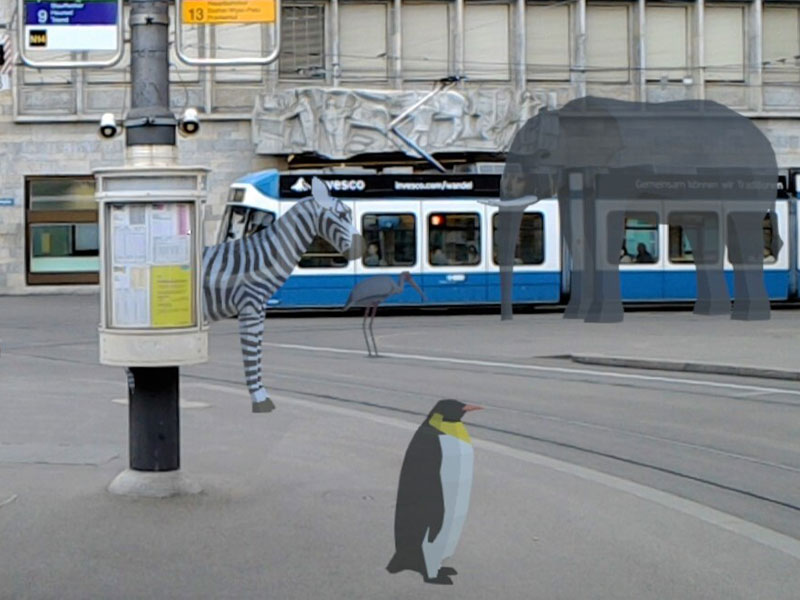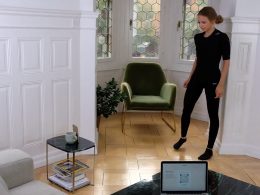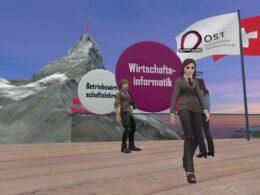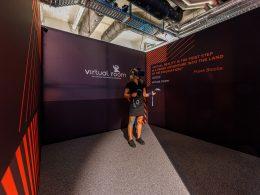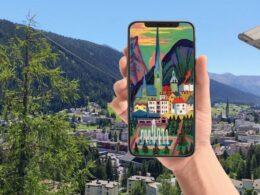Moving pictures in the newspaper like Harry Potter or digital weather forecasts in Bernese? New media technologies are changing journalism. The Media Technology Centre at ETH Zurich supports media companies on their way into the future.
Many things are possible in the magical world of the sorcerer's apprentice Harry Potter: for example, there is the "Daily Prophet". In this newspaper for witches and wizards, the figures depicted move just like in real life.
Modern media technologies come very close to this: at ETH Zurich's Media Technology Centre (MTC), for example, students and researchers are working on such an "augmented paper": Anyone reading this newspaper with augmented reality glasses will see moving images on the pages - just like in Harry Potter. "It's quite possible that these glasses will soon be so small that we'll be able to wear them all day," says Severin Klingler, Managing Director of the MTC, "then we'll see how digital and real content merge in an augmented paper."
Harry Potter starts school - a film for the newspaper
The "augmented paper" that the ETH researchers are currently developing combines the advantages of the classic paper newspaper with the benefits of digital content: "You hold the newspaper in your hand as usual. But when you read it with AR glasses, the images and text change," says Klingler. For example, you can see a steam locomotive appear in the picture under the headline "School starts for witches and wizards". In future, this technology could be used to embed real events such as the Böög burning at Zurich's Sechseläuten as a film in the newspaper. "What's new about our technology is that the moving images are displayed correctly even if the newsprint bends as you turn the pages," Klingler explains.
The MTC is pursuing very practical goals with a project for AR glasses in Zurich's city centre: anyone looking at Paradeplatz through AR glasses will see local information such as tram departure times, sales posters of the surrounding shops - or newspaper articles about the two major banks located there. Questions of practical readability take centre stage: Where and when is a poster displayed? Where are the articles displayed? Which areas are suitable for the advert?
A dinosaur walks through Zurich
"The MTC is primarily concerned with how to create this new type of digital content for the media as easily as possible," explains Klingler. With the MTC's tool, the Paradeplatz can be easily enriched with virtual figures - for example as a zoo or underwater world: "Everything that someone creates in virtual reality automatically appears on the real Paradeplatz," says Klingler, "so our tool relieves users of the tedious question of how to get their virtual content to the right real location. They can concentrate fully on creating."
One of the technical challenges for which a simple solution is still lacking is occlusion handling: unlike in cinema films, which are edited in the studio, virtual characters moving through a real situation in real time often do not immediately disappear from the field of vision when a user turns a street corner. This disturbs the credibility of the viewing experience.
With the ETH researchers' approach, this is now more successful: for example, a virtual dinosaur travelling by the tram stop at Zurich's Stampfenbachplatz disappears from view immediately, just like in real life, when it reaches the tram stop. Media Centre of the Canton of Zurich bends around the corner of the building. The ETH researchers used the 3D model of the city of Zurich for this purpose.
Support for the digital transformation
As a rule, the MTC's development projects can be realised within one to two years and have practical benefits for editorial teams and media companies. The aim is to support Swiss media companies in their digital transformation. This applies to the creation of journalistic content as well as the production of various media formats and methods for bringing content to users digitally and personalising media consumption.
Source: ethz abridged / Youtube





